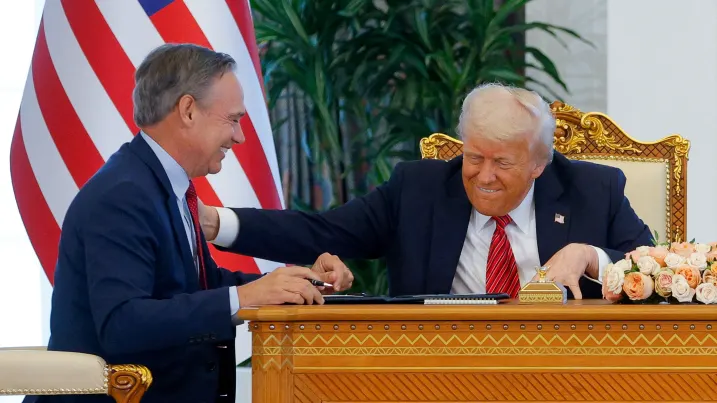The US-Gulf AI Partnerships Are Reshaping the Future of AI

The United States has recently undertaken key AI infrastructure deals with the United Arab Emirates (UAE) and the Kingdom of Saudi Arabia (KSA). This shift signals a very prominent turning point in the economic, geopolitical, and technological balances as they continue to assert America’s AI leadership, while also leading to complex risks and opportunities.
Macro Impact: Trillions in AI Capital
The U.S. sidestepped previous AI export controls and unleashed vast capital inflows into AI infrastructure. As a result, the energy resources of the Gulf, coupled with money, can enable the construction of data centers on a mass scale. This opens the bottlenecks of datacenter capacity in the U.S. and makes GPU availability possible, thus benefiting all American AI companies, from chip manufacturers to cloud providers.
UAE Deal Highlights: G42’s GPU Quota and 5GW Datacenter Campus
Some half a million Nvidia GPU slots, an annual import quota, were secured by Abu Dhabi’s G42, the state-backed AI leader, and it has plans to construct a huge AI datacenter campus of 5GW capacity. It will essentially provide regional AI training and inference needs with energy supplied from solar, gas, and nuclear. The U.S. hyperscalers, including Microsoft, stand to benefit by way of partnerships with G42.
Saudi Arabia’s AI Strategy: HUMAIN and Economic Ties
Saudi Arabia’s $600 billion economic package includes major investments in U.S. data centers alongside the creation of HUMAIN, a new AI firm deploying AMD and Nvidia gear at scale. The kingdom attracted U.S. tech firms such as Oracle and AWS to build local AI ecosystems while investing billions into U.S. AI infrastructure. Saudi datacenter capacity remains more dispersed compared to the UAE, but continues growing rapidly.
Two-Way Capital Flows: Middle East Investments in U.S. AI Infrastructure
The investment of billions in U.S. data centers from Middle Eastern entities like G42 and HUMAIN creates a symbiotic relationship. This capital injection lowers financing costs and speeds up the development of AI infrastructure just when U.S. hyperscalers have started to pinch spending.
Geopolitical Implications: Strengthening U.S. Influence While Blocking China
This underscores the deepening dependence of Gulf countries on American AI technology and hardware, thereby virtually excluding Chinese players such as Huawei. The strategic alignment serves to deepen U.S. geopolitical influence in one of the world’s critical regions by securing the supply chains of AI from competing powers.
Security and Risk Considerations
Although partnerships are solid, risks remain:
- GPU Diversion Risk: Software telemetry helps to check that the GPUs are not diverted to adversaries such as China.
- Misuse Risk: Strict KYC protocols need to be in place so that any bad actor intent on using Gulf GPUs for malign AI purposes can be prevented.
- Model Weight Security: Sensitive weights of the AI model must have a layered construction for their protection, and this includes protections from cyber attacks, hardware enclaves, physical inspection, and protections from Human intelligence.
Challenges and Counterpoints
With the benefits, the challenges are many:
- Hyperscalers in the U.S. have a hard time offering infrastructure and power domestically.
- Gulf Nations’ political dynamics and human rights issues may complicate partnerships.
- Maintaining a secure and compliant front requires ongoing effort and oversight across international borders.
Pivotal Moment in Global AI Infrastructure and Geopolitics
The U.S. and Gulf AI partnerships represent a touchstone for the global AI infrastructure and geopolitics. By unlocking capital and building critical infrastructure, these agreements sustain America’s leadership in AI, while risks and concerns emerge to challenge this view, demanding the utmost attention to develop strategies to keep our competitive advantage.
Follow us on WhatsApp, Telegram, Twitter, and Facebook, or subscribe to our weekly newsletter to ensure you don’t miss out on any future updates. Send tips to editorial@techtrendsmedia.co.ke



